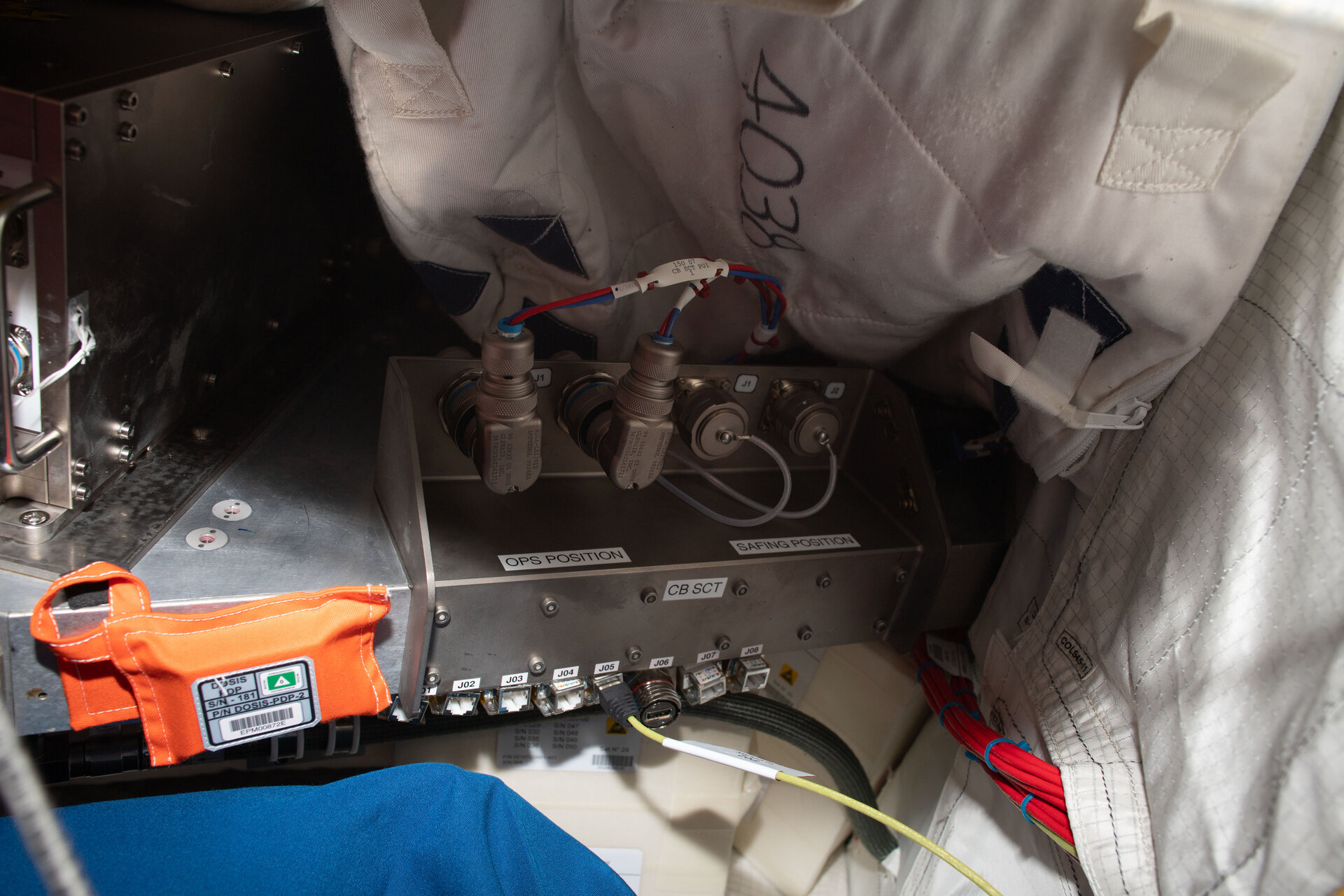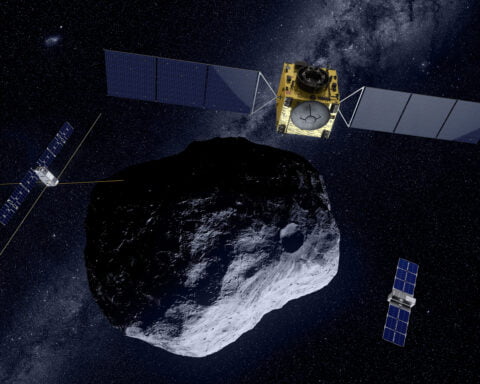Orange Dosis-3D pouches are everywhere in the Columbus laboratory on the International Space Station. A series of active and passive dosimeters, they measure space radiation inside the module as well as how it penetrates the Space Station’s walls.

Radiation levels in space are up to 15 times higher than on Earth. As soon as humans leave the protective shield that is Earth’s atmosphere, space radiation becomes a serious concern.
The Columbus module is monitored by 11 passive dosimeters. The dosimeters are about the size of a pack of playing cards and attach to the walls of Columbus with Velcro. The detectors record how much radiation has been absorbed in total during the period they are in space.
This experiment has been monitoring radiation levels for a number of years and after each six-month crew rotation, the detectors are replaced to record changes in radiation.
In addition to the passive detectors, Dosis-3D uses active dosimeters that measure fluctuations in radiation levels over time. Data from all Station partners is shared to create as complete a picture of space radiation as possible.
Dosimeters will also be flown on the Gateway, the next human habitat to be built in the vicinity of the Moon, to generate a more accurate assessment of radiation in lunar orbit.
Meanwhile, the ColKa communications terminal visible in this image, will connect the Columbus module to the European Data Relay System satellites in geostationary orbit that transfer data via European ground stations. ColKa was installed during a recent spacewalk and began commissioning this week. It will enable faster uplink and downlink speeds between the European segment of the Space Station and European researchers on the ground.
The know-how gained from designing, building and running ColKa could potentially be used in exploring farther from Earth in the Gateway around the Moon. ESA will supply the ESPRIT module for communications, scientific experiments, and refuelling for the international lunar outpost.
These ambitious plans require reliable navigation and telecommunication capabilities to succeed. Building these independently would be costly, complex and inefficient.
If this work were outsourced to a consortium of space companies that could put a constellation of satellites around the Moon, each individual mission would become more cost-efficient.
As part of an initiative called Moonlight, ESA is now conducting deep analyses of the planned lunar missions and further developing possible solutions, both technical and business-related, to provide telecommunications and navigation services for the Moon.






